Reeling from Helene, Georgia farmers wonder how long they can persevere

BROOKS COUNTY — Vance Hiers beams with pride when describing the organized rows of pristine pecan trees that have stretched across his family’s South Georgia farm for decades.
Then Hurricane Helene ripped across his land, west of Valdosta, one of a series of devastating storms that have toppled thousands of trees on the verge of harvest, raising questions for Hiers over whether the work still is worth it.
“I’m about that close to digging them up and just quitting,” Hiers said, pinching a shattered pecan shell between his fingers. “I mean, we have almost 600 acres of that crap.”
Helene wreaked havoc across the Southeast and ranks as the country’s deadliest storm since Hurricane Katrina in 2005. From Valdosta to Augusta, Helene killed dozens of Georgians, devastated local infrastructure and disrupted the harvest of staple crops that epitomize the state’s agrarian roots.
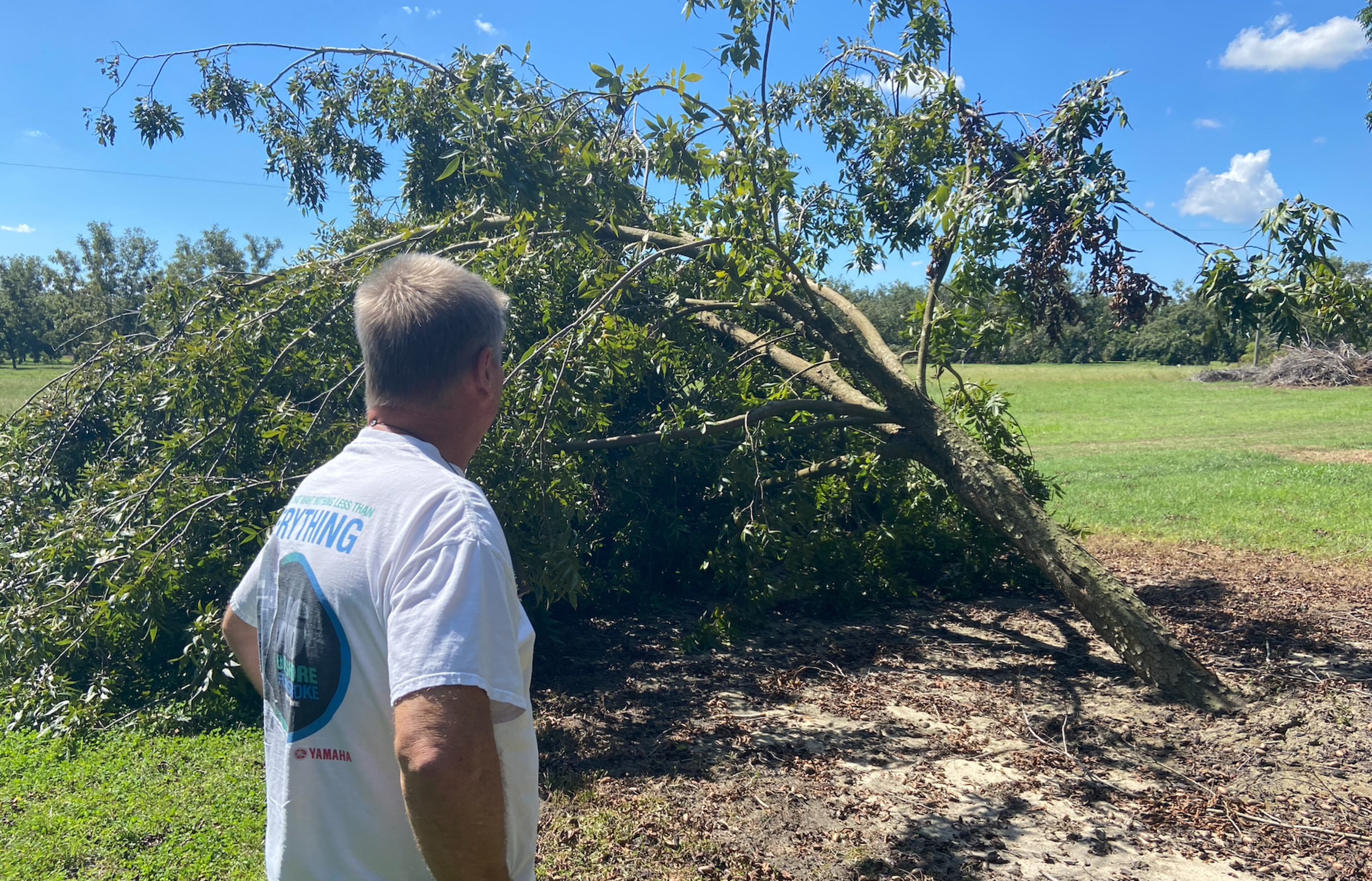
Research shows a warming climate has increased the destructive potential of these storms, leaving battered farmers to grapple with whether replanting is prudent. In the past 13 months, South Georgia has endured three hurricanes — Idalia, Debby and Helene — that have taken their toll. Hurricane Michael in 2018 also devastated the region.
Of the nearly dozen farmers who spoke with The Atlanta Journal-Constitution, all fear what the next hurricane will bring. But some said they’ll endure any hardship to make sure the family farm doesn’t die on their watch.
“We’re standing on dirt that’s been in the family since the late 1800s, and I don’t want to be the one to lose it,” said Lamar Vickers, a fourth-generation Berrien County farmer who estimates he lost seven figures worth of crops to Helene.

South Georgia was inundated with heavy rains and wind gusts exceeding 100 mph during Helene’s march through the Southeast on Sept. 26 and 27. Only the sturdiest blueberry bushes and pecan trees withstood the howling winds, while peanuts and cotton fields quickly became waterlogged, threatening their upcoming harvests.
Georgia has diversified its economy in recent decades, but agriculture remains the state’s biggest industry, valued at more than $74 billion annually. Georgia Agriculture Commissioner Tyler Harper, himself a seventh-generation farmer, said he’s visited dozens of farms in the wake of Helene to find similar stories of devastation.
“Regardless of where you go, it’s widespread catastrophic damage to pretty much every sector of the ag industry,” he said.
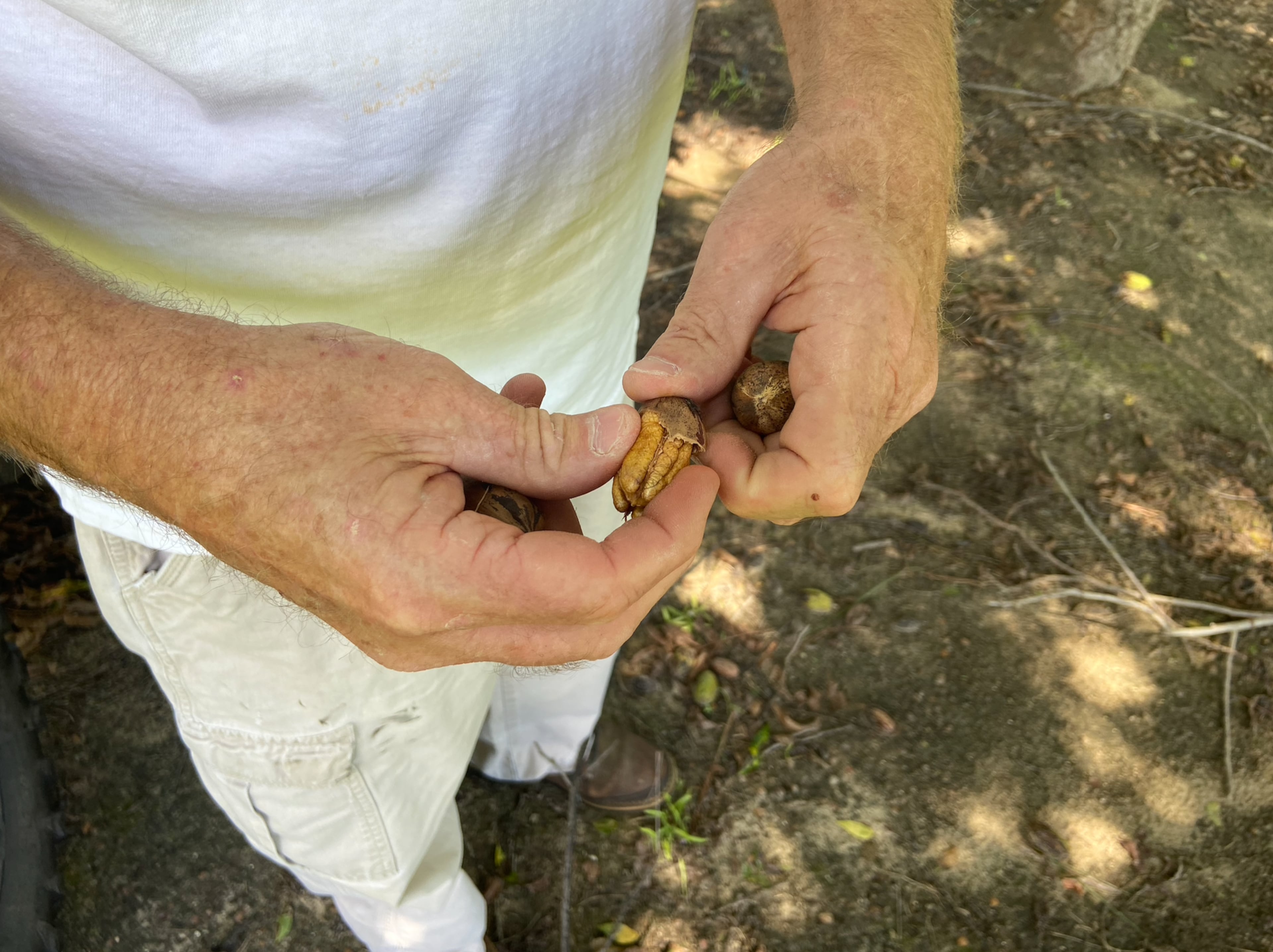
Preliminary damage estimates still are being calculated by the University of Georgia and U.S. Department of Agriculture’s Farm Service Agency, but Harper said the full scope likely won’t be known until crops are harvested and farmers calculate their profit — or, more likely, losses.
Autumn is harvest season for peanuts, pecans and cotton, but some farmers said Helene didn’t spare enough to justify salvaging. While surveying downed trees, Hiers, the pecan farmer, noticed a squirrel scurry away, likely stashing storm-scattered nuts.
“Well, hell, at least it’ll do somebody some good,” he said.

‘The smell of money’
The Peach State, which ironically isn’t the country’s top producer of its namesake fruit, is a diverse agrarian powerhouse. It leads the nation in pecan, peanut, spring onion and blueberry production, but it truly has no peers when it comes to poultry.
Doug Harper, no relation to the agriculture commissioner, said his farm in Berrien County, near Nashville, is usually bustling with the sounds — and smells — of broiler birds.

His eight large chicken houses can hold up to 27,400 chickens each and offer a six-figure payday each season. But on Tuesday, about four days after the storm barreled across Georgia, his coops were eerily empty.
Harper said the storm almost immediately knocked out his power, and the rain flooded the chicken houses’ backup generators, leaving his birds to overheat and die.
“I used to laugh and say, ‘That’s the smell of money,’” Harper said of a full chicken house. But after losing his flock to Helene, he said the deathly scent coming from the empty coops “is like the loss of money.”
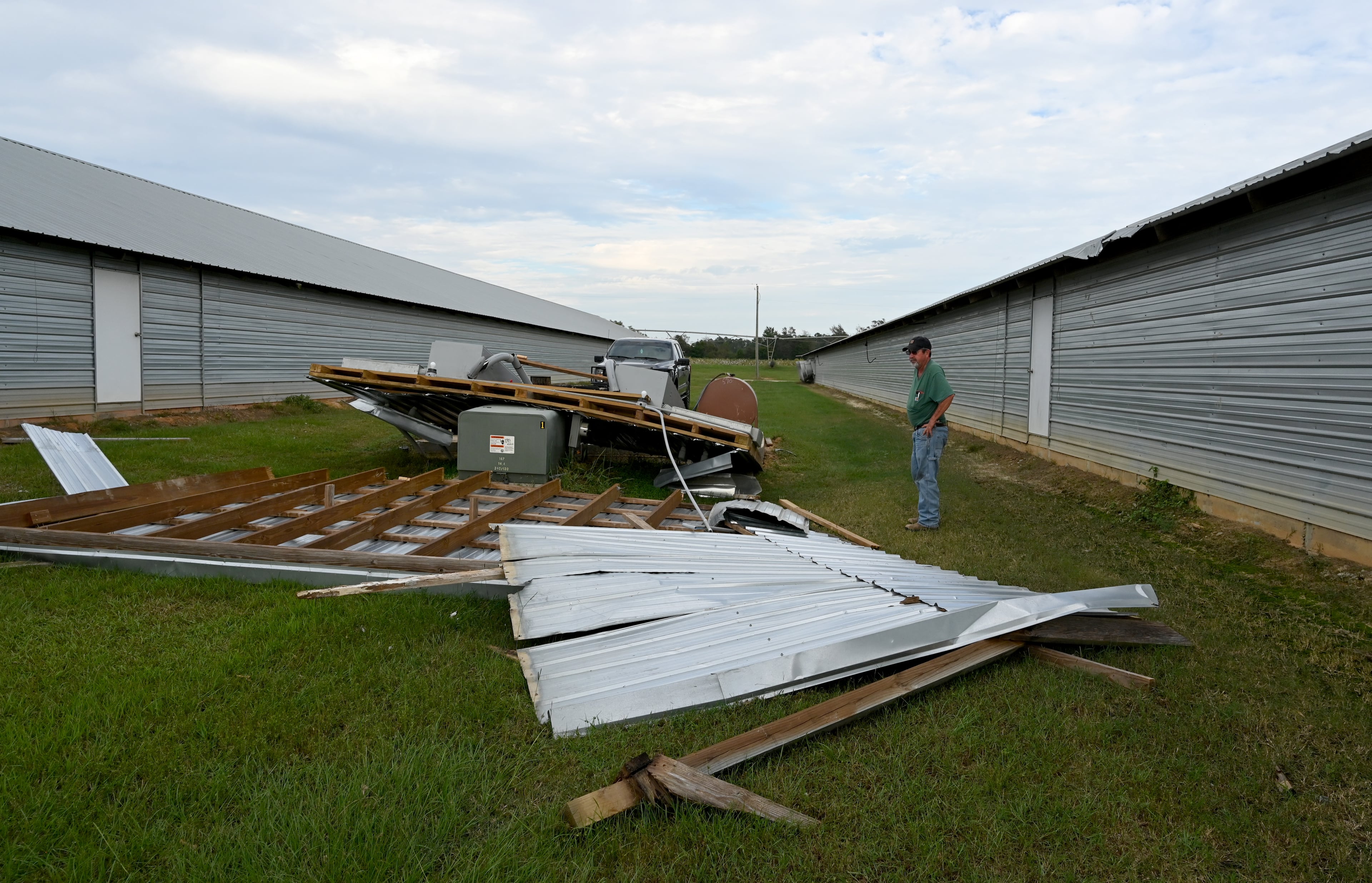
Most mom-and-pop farmers take on hefty debts to buy equipment, sow their fields, fill their chicken coops and survive until harvest. The money they make from selling the fruits of their labor is used to repay debts and start the cycle anew.
When a farmer loses an entire crop or livestock, government aid and insurance are the only sources of relief. The last federal farm bill was adopted in 2018, and its subsidies haven’t been updated to account for the COVID-19 pandemic, subsequent inflation and heightened interest rates.
Justin Studstill, a lawyer who owns a trucking company and a 6,000-acre farm in Lanier County, near Valdosta, said most farmers have been lucky to break even in recent years as input costs like fertilizer, diesel and labor have gotten more expensive, making profit margins thinner each year.
“If we had not had a storm, farmers were still going to lose money this year,” he said. “So the storm just piled it on.”
Helene destroyed his entire cotton crop and its deluge compromised his peanuts, which are likely to become overrun with disease and fungus.
“There will be a lot of farmers who are on the verge of bankruptcy after this,” Studstill said. “This’ll push a lot of them out, particularly farmers who are not diversified or don’t have other sources of revenue.”
Tyler Harper — the state’s agriculture commissioner — said Helene and other storms have only compounded what he called “an economic crisis in the state of American agriculture.”
Battered supply chains
Whether its farm-to-table restaurants or supermarket staples, all raw materials pass through dozens of hands in the modern agriculture system.
Storm-damaged crops that fail to enter that complex supply chain have ripple effects that impact jobs across Georgia.
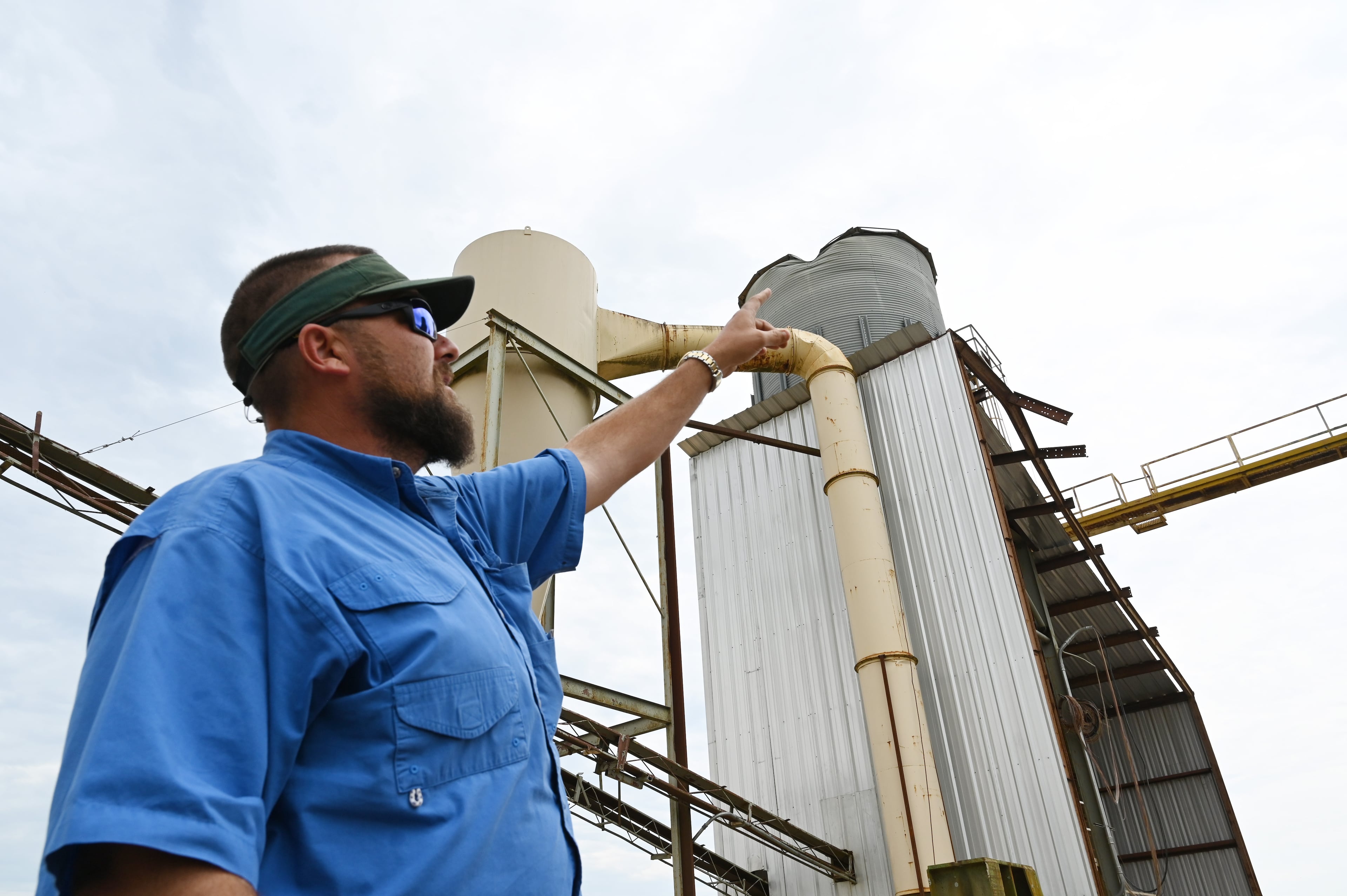
Carl Dixon II, a farmer who runs a supply and distribution center in Berrien County, said thousands of tons of peanuts usually pour through his family’s facility every day during fall. More than 60 farms in the region send peanuts to Dixon Farm Supply for cleaning, organizing and packing.
Harvest has been delayed by Helene, which also destroyed Dixon’s peanut elevator and damaged his silos. Rebuilding those without power is a “major undertaking,” he said.
“We’re right at the tip top start of peanut season, right when we’re fixing to really need it,” Dixon said. “... When harvest does start, it comes at a fast pace.”
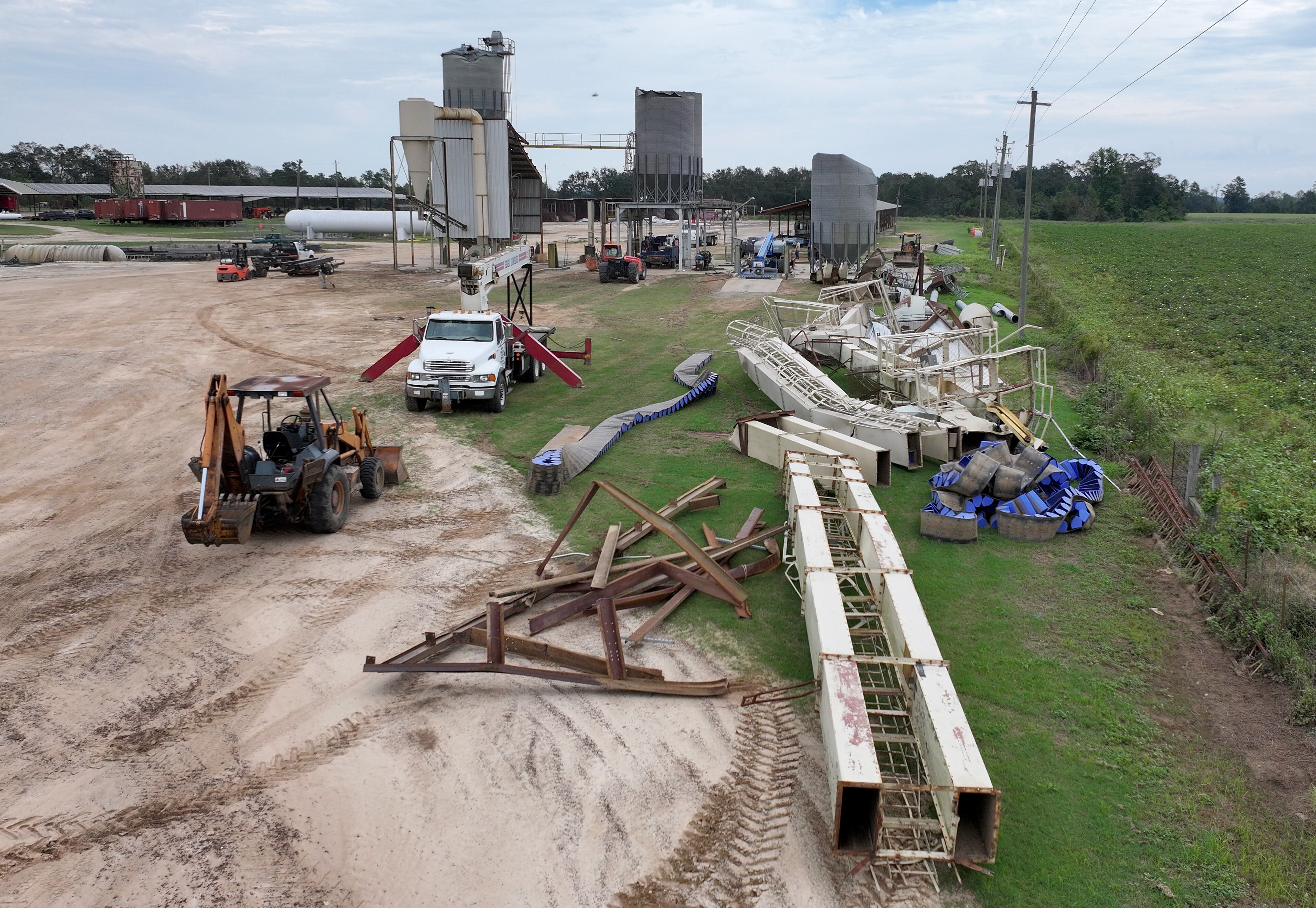
Timothy Coolong, a horticulture professor at the University of Georgia, said the timing of the storm was especially bad for some of Georgia’s most important crops. Tens of thousands of pecan trees, heavy with nuts soon to be ready for harvest, were uprooted by the storm. Delicate cotton bolls, some of which were damaged by Debby in August, were also no match for Helene’s winds.
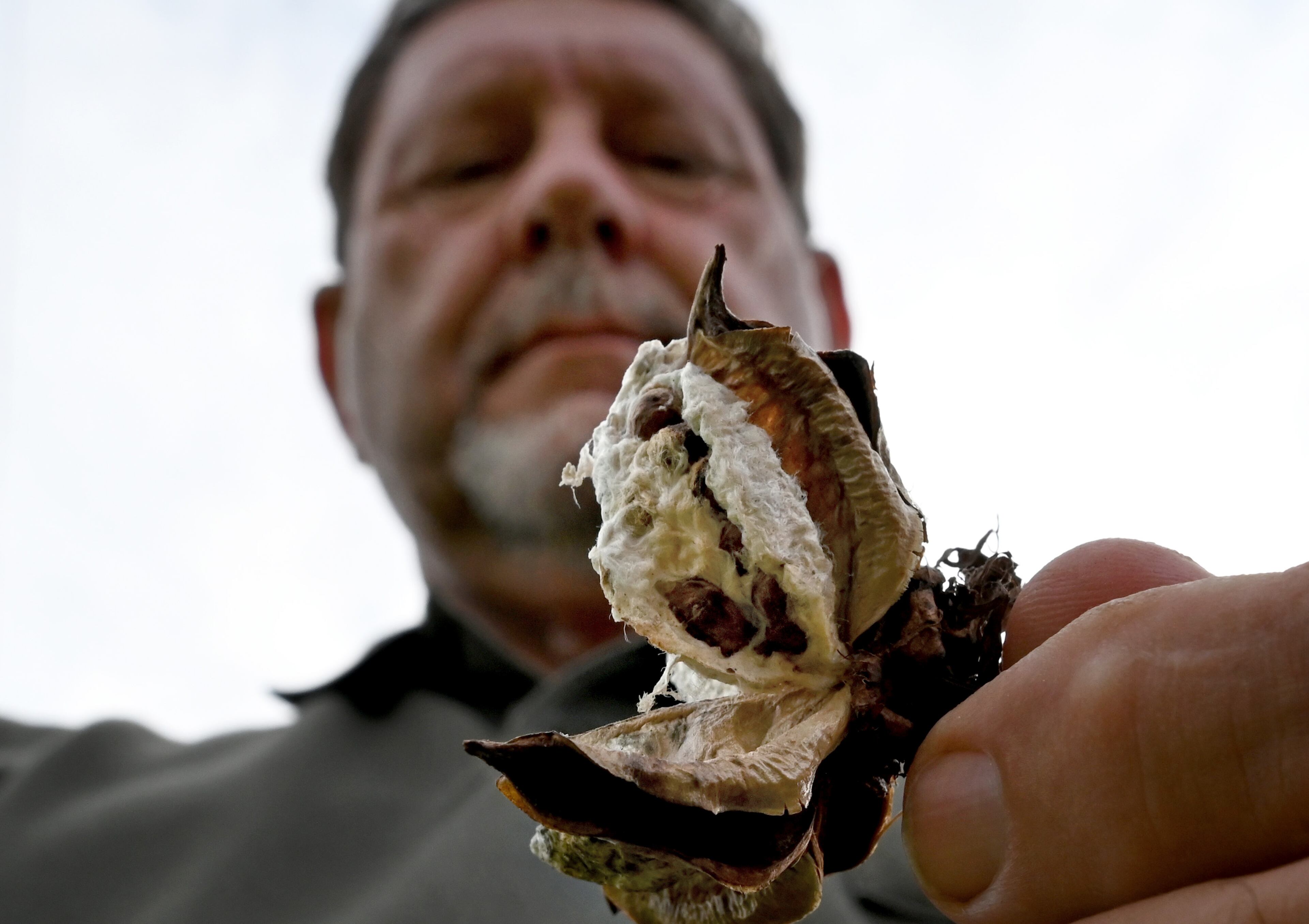
In 2022, the most recent year available, Georgia’s cotton crop was worth $1.3 billion, making it the state’s second-most valuable agricultural commodity, UGA figures show. Georgia pecans, meanwhile, were worth more than $400 million, 10th on the list.
Peanuts, which grow underground, were more protected from the wind and rain. But with power outages in some areas persisting and processing facilities for certain crops destroyed by the storms, even farmers whose crops survived Helene could have trouble getting their product to market, Coolong said.
“While the crop itself may have been protected, all the subsequent post-harvest steps have been impacted substantially in many regions,” he said.
Georgia’s agriculture commissioner said depressed harvests should put elected officials on high alert, especially if it leads to the U.S. relying on foreign imports.
“A nation that can’t feed itself can’t protect itself,” Harper said. “American agriculture is truly part of our nation’s national security.”
Adapting to changes
Georgia is seeing the effects of climate change in storms, droughts and pest infestations, said Bharat Acharya, the research director of the Rodale Institute’s Southeast Organic Center in Chattahoochee Hills. Rodale is a nonprofit that studies regenerative agriculture.
“We have a very unique opportunity to rebuild agriculture in ways that we can protect farmers and we can create more resilient and more sustainable agricultural systems,” Acharya said. But that will take a much more collaborative approach from society, he said.
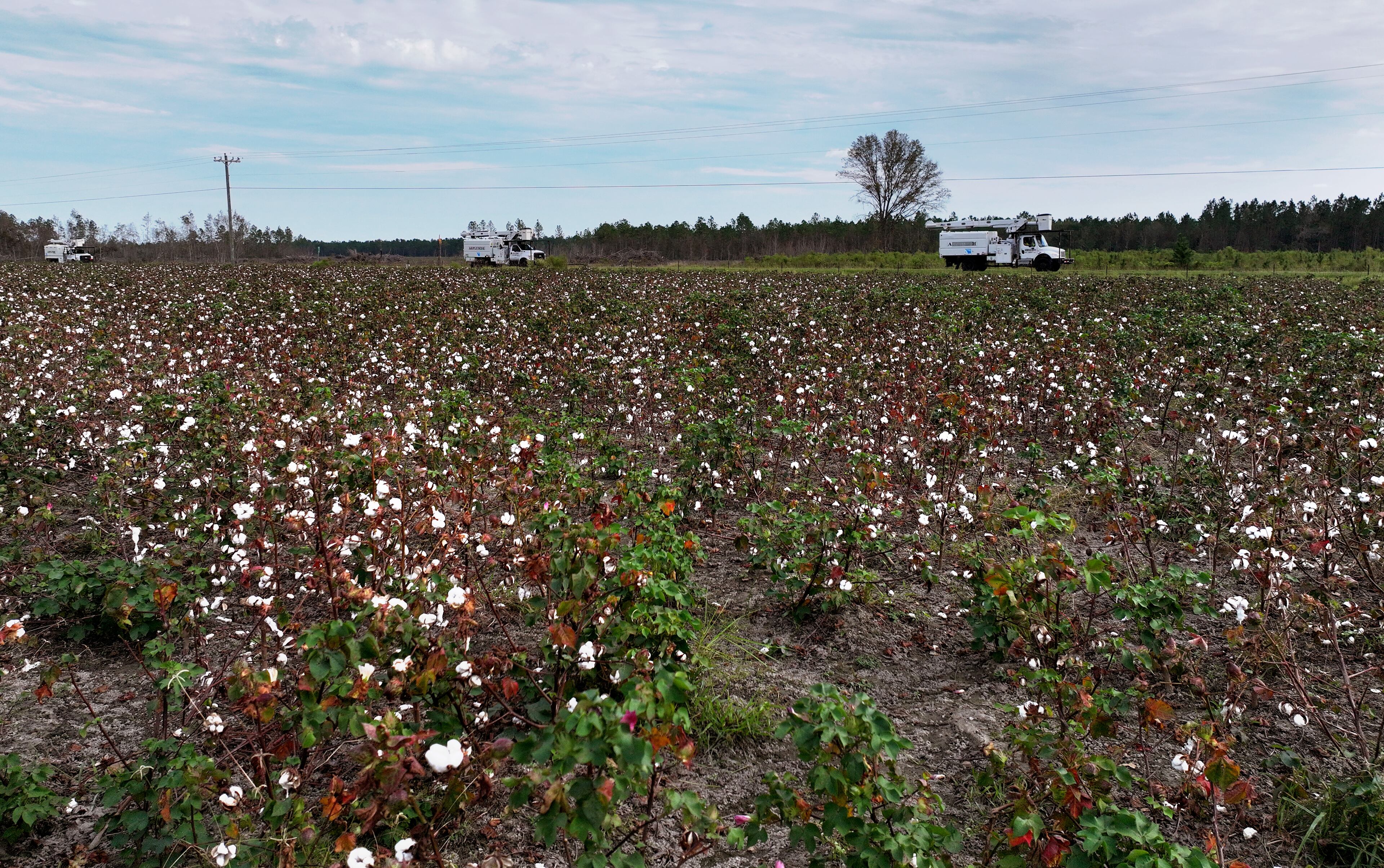
That means investing in what Acharya calls “climate-smart agriculture.” This includes greater diversity of crops and varieties, changing planting times, more widespread use of sensors and data to improve irrigation and live-monitoring of livestock.
Martha Griffis, a part-time nurse who operates a farm with more than 500 citrus trees in Echols County, near Valdosta, said storms like Helene “will become normal” because of climate change.
The USDA divides the country into plant hardiness zones, which is designed to help growers plant climate-appropriate crops. In the six years since Griffis and her husband, Rick, decided to plant various citrus trees, their area’s hardiness zone classification changed because of warming average temperatures.
The couple said they witnessed in horror as Helene caused many of their Sugar Belle mandarin trees to split as the wind tore them apart.
“Between the storms and the increase in temperatures, I imagine a lot of people will just throw their hands up,” Rick Griffis said. “... We’d like to keep it going, and we’ll try to. But Mother Nature may have other plans.”
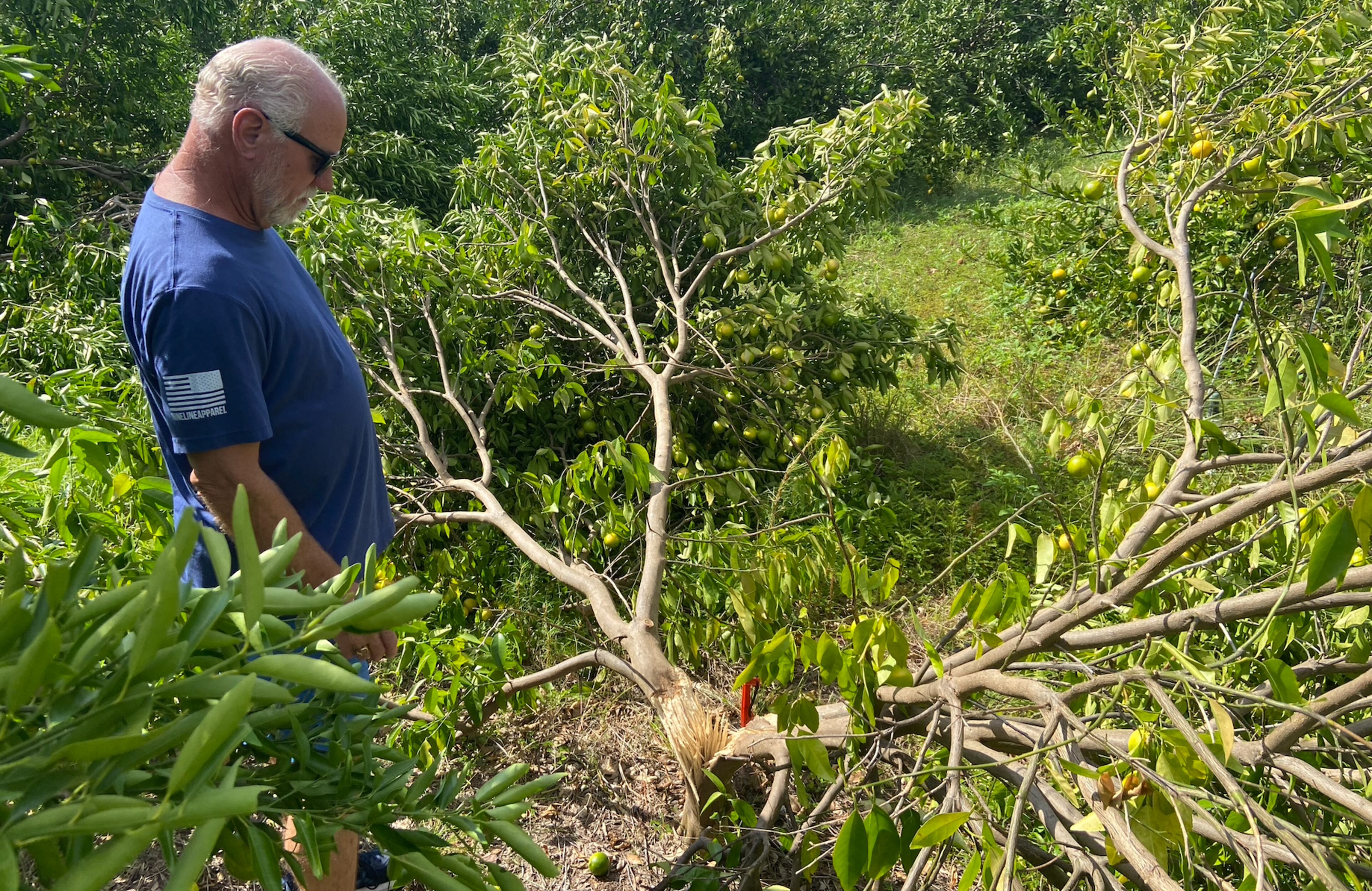
Adopting new practices and technologies can be daunting and expensive for farmers who already are struggling with crop loss and declining returns. That’s where Acharya sees a role for the government, universities and nonprofits like his. Among the projects Rodale is currently working on is looking at the potential for saffron as a lucrative crop in Georgia. Acharya also sees potential for sorghum, which is drought tolerant.
“Doing research in collaboration with each other — that is very important to prepare for the effects of climate change,” Acharya said.
Doug Harper, the chicken farmer who lost his flock, is adamant he will do whatever he can to honor the blood, sweat and tears his family poured into his property, even if coming storms try to sully his efforts.
“I want to work like my daddy did — ’til I die,” he said. “This is my home, and without it, what have I got?”
— AJC staff writer Drew Kann and contributor Meris Lutz contributed to this report.
A note of disclosure
This coverage is supported by a partnership with Green South Foundation and Journalism Funding Partners. You can learn more and support our climate reporting by donating at ajc.com/donate/climate.
More Stories
Keep Reading



